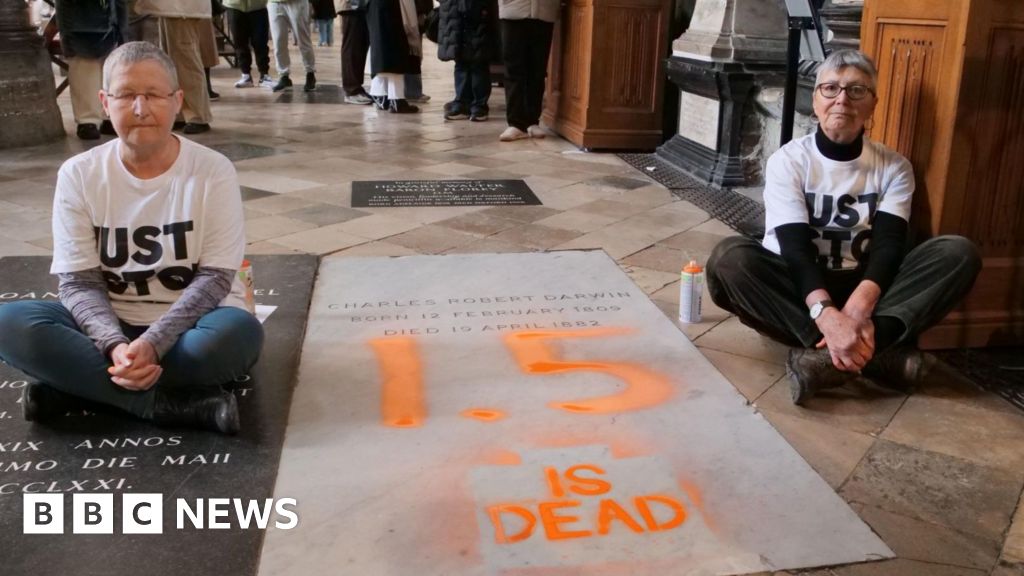Sipapu Bridge Arch across White Canyon, Natural Bridges National Monument, San Juan County, Utah, … [+]
I am the world’s only “eclipse journalist.” For the most up-to-date information on the “ring of fire” solar eclipse—including travel and lodging options—please click the big blue “follow” button above orcheck out my main feed for new daily articles.
The “ring of fire” solar eclipse will be visible from nine states in the U.S. on Saturday, Oct. 14, but it is Utah that will attract a large number of eclipse chasers.
While most Americans will witness a partial solar eclipse, only those within a narrow 125-mile-wide path will be able to see the “ring of fire.” Utah offers numerous scenic options within its borders, with a favorable climate for clear skies and some of the darkest night skies in the country.
The “ring of fire” will enter Utah at 10:24 am MDT on Oct. 14, and will last up to 4 minutes and 40 seconds near the centerline, according to GreatAmericanEclipse.com.
The solar eclipse will traverse through many U.S. National Parks, including Canyonlands, Capitol Reef, Bryce Canyon, Grand Staircase-Escalante, Glen Canyon, and Rainbow Bridge.
And that’s just the beginning. Here are 12 recommended places in Utah to witness the “ring of fire” solar eclipse:
Note: Some of these suggested locations are in remote areas with limited facilities and resources. Make sure to be fully prepared with fuel, food, cash, toilet paper, and ice, as these may not be available in your location. Keep in mind that many businesses in southeastern Utah are operated by Navajo employees, and may be closed during the morning. Follow the Visit With Respect guidelines.
1. Bryce Canyon National Park
10:27 am MDT, 2 minutes 36 seconds
During the 2012 “ring of fire,” more than 10,000 visitors flocked to Bryce Canyon National Park, so expect a busy day. Access to the park will be limited to the Bryce Canyon shuttle and shared-use bike path, with organized events available. The night before the eclipse, there will be a lecture by NASA Lunar Scientist Dr. Barbara Cohen at 8 p.m. at the North Campground Outdoor Theater. The night following the eclipse, there will be an evening program with Caltech postdoctoral fellow Cameron Hummels at 8 p.m., followed by telescope viewing.
2. Marysvale
10:26 am MDT, 4 minutes 36 seconds
Although many will head to Sevier on the centerline, Marysvale, located near Highway 89, will offer a long-lasting view of the “ring of fire.”
3. Goblin Valley State Park
10:28 am MDT, 2 minutes 54 seconds
This relatively quiet Utah State Park, located west of Moab, is expected to be busy on Oct. 14 and will be hosting an event. Goblin Valley State Park is known for its mushroom-shaped hoodoos. There will be an entry fee of $40.
4. Boulder
10:27 am MDT, 4 minutes 40 seconds
South of Capitol Reef National Park lies Boulder, home to an 11th-12th century Puebloan village within Anasazi State Park Museum. This town also offers a 67-mile-long Burr Trail to Bullfrog, passing the remote Henry Mountains.
5. Lower Calf Creek Falls Trail
10:27 am MDT, 4 minutes 22 seconds
Located south of Boulder in Escalante, Lower Calf Creek Falls features an easy 6.2-mile circular trail. Just south of the falls is Kiva Koffeehouse.
6. Canyonlands National Park
10:30 am MDT, 1 minute 7 seconds
While most of Canyonlands National Park’s Islands In The Sky section is outside of the eclipse’s path, its Grand View Point Road reaches into it, offering a brief glimpse of the “ring of fire” and an extended display of Baily’s beads.
7. Bluff
10:29 am MDT, 4 minutes 31 seconds
Situated near the Four Corners but slightly away from the major attractions, the small town of Bluff is located on the Trail of the Ancients Scenic Byway. If you plan on visiting this backcountry location, be sure to heed the advice provided.
8. Goosenecks State Park
10:29 am MDT, 4 minutes 40 seconds
Located above a meander (gooseneck) in the San Juan River, Goosenecks State Park will host the Ring of Fire Fest, which includes telescopes, solar binoculars, food booths, and free solar eclipse glasses. Entry fee is $5.
9. Natural Bridges National Monument
10:29 am MDT, 4 minutes 27 seconds
Home to Kachina, Owachomo, and Sipapu natural bridges, as well as the world’s first-ever International Dark Sky Park, Natural Bridges National Monument is a hidden gem worth exploring.
10. Valley of the Gods
10:29 am MDT, 4 minutes 40 seconds
This peaceful and scenic backcountry area, known as a 17-mile loop, is located near Mexican Hat and requires a 4×4 vehicle to access. The Exploratorium museum based in San Francisco plans to live stream the eclipse from this location starting at 9:00 am PDT.
11. Mexican Hat
10:29 am MDT, 4 minutes 40 seconds
Situated on the banks of the San Juan River, Mexican Hat is known for its unique rock formations and could be a great alternative location away from the crowds.
12. Monument Valley Navajo Tribal Park
10:29 am MDT, 4 minutes 16 seconds
Monument Valley Navajo Tribal Park is another popular destination, although it’s unclear if it will be open for the event. Take care to respect Navajo culture, as an eclipse is referred to as “jóhonaa’éí daaztsą́” (meaning “the sun is dead”) in Navajo culture, and it signifies the rebirth of the sun. Many Navajo individuals will be fasting and praying during this time, and businesses may be closed.
I am the editor of WhenIsTheNextEclipse.com and author of “The Complete Guide To The Great North American Eclipse of April 8, 2024.”
Wishing you clear skies and amazing celestial views.















